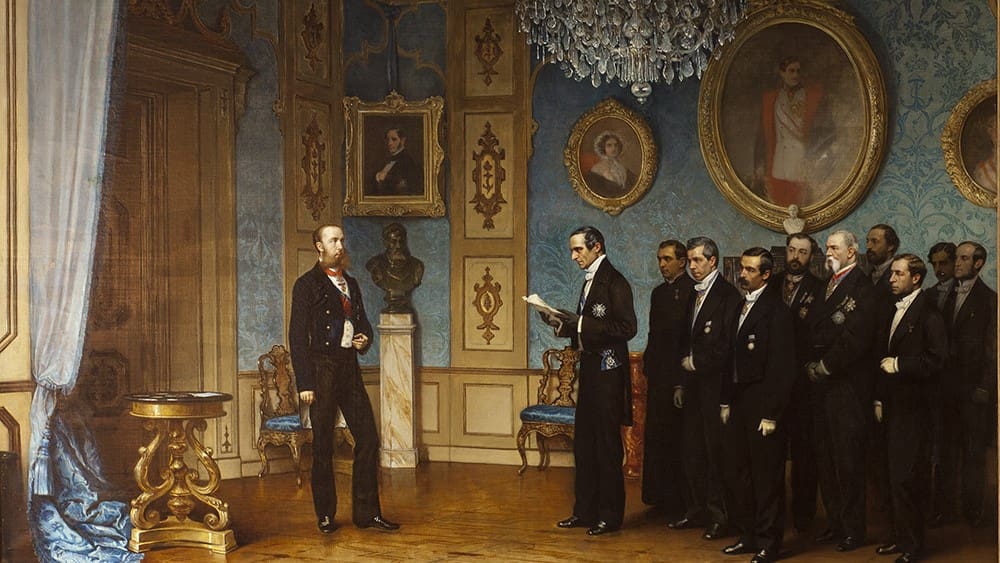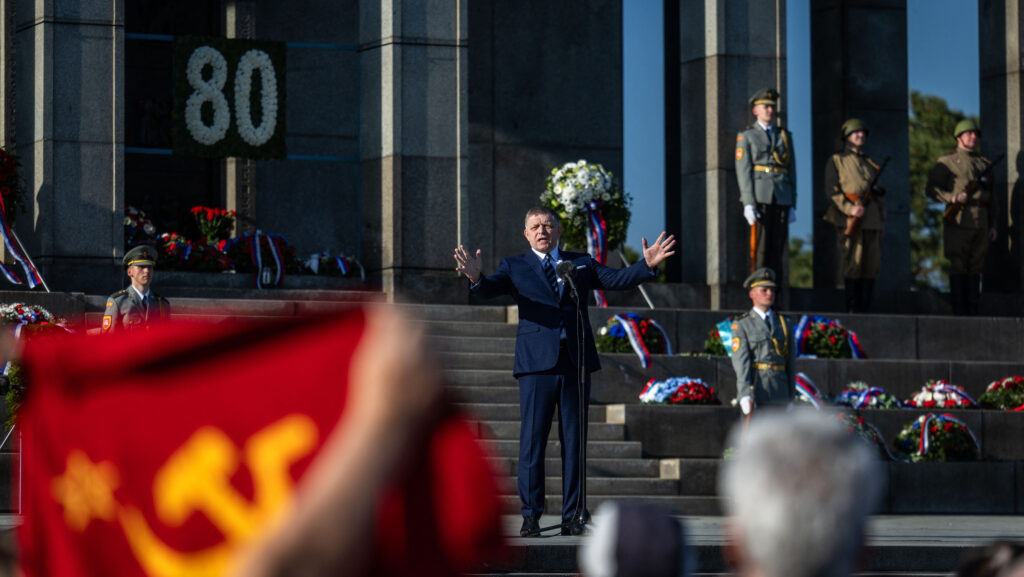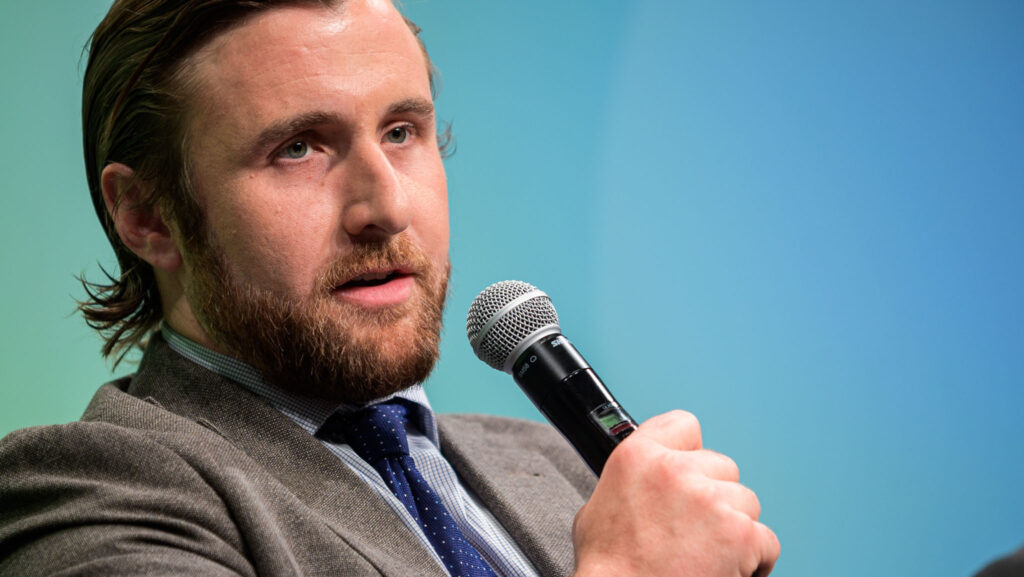Early Years
Maximilian was born In Vienna, in 1831. His father was Archduke Franz Karl, and his brother the later emperor of Austria and king of Hungary, Francis Joseph. The young Maximilian was eager to outperform his older brother in every way.
However, the Habsburgs were using the system of primogeniture, and thus he was deemed to the status of second fiddler. Maximilian was open-minded, cheerful, ambitious, and charismatic. It was clear at a very young age that his ambition will not be satisfied by being a minor royalty.
Maximilian served as a soldier in the Imperial Army, taking part in the campaigns aimed at putting down the revolutions of 1848. However, the bloodthirsty retribution against the rebels appalled and disgusted him. His attention quickly turned toward the Imperial Navy, which he joined around 1850, embarking on military ships for many sails. In 1854, he was appointed the chief commander of the navy. In this capacity, Maximilian executed many important reforms, modernizing the navy. His activities were also instrumental in creating the port of Trieste and Pula.
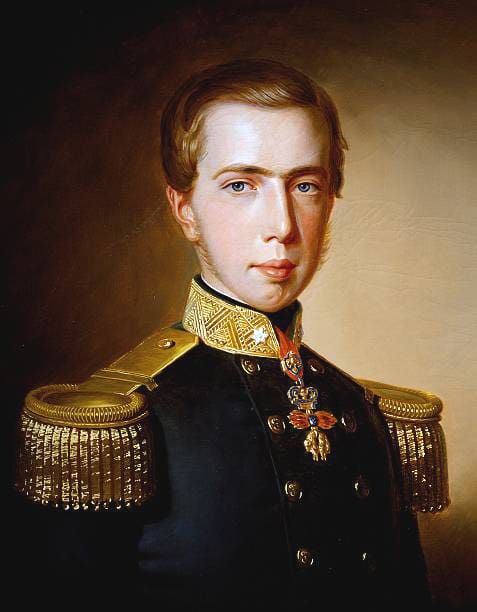
During a visit to Belgium, Maximilian met and fell in love with Charlotte of Belgium, and the two soon got married. The archduke was so fond of the Istrian landscape that he had his and his spouse’s private residence built near Trieste. This became the Miramar Castle (the name meaning ‘look at the sea’ in Spanish), which stands there to this very day. Built in eclectic style from Istrian white stone, the castle looks over the Gulf of Trieste, running out into the sea on top of a cliff. It was in this castle that Maximilian received the Mexican delegation that offered him the throne.
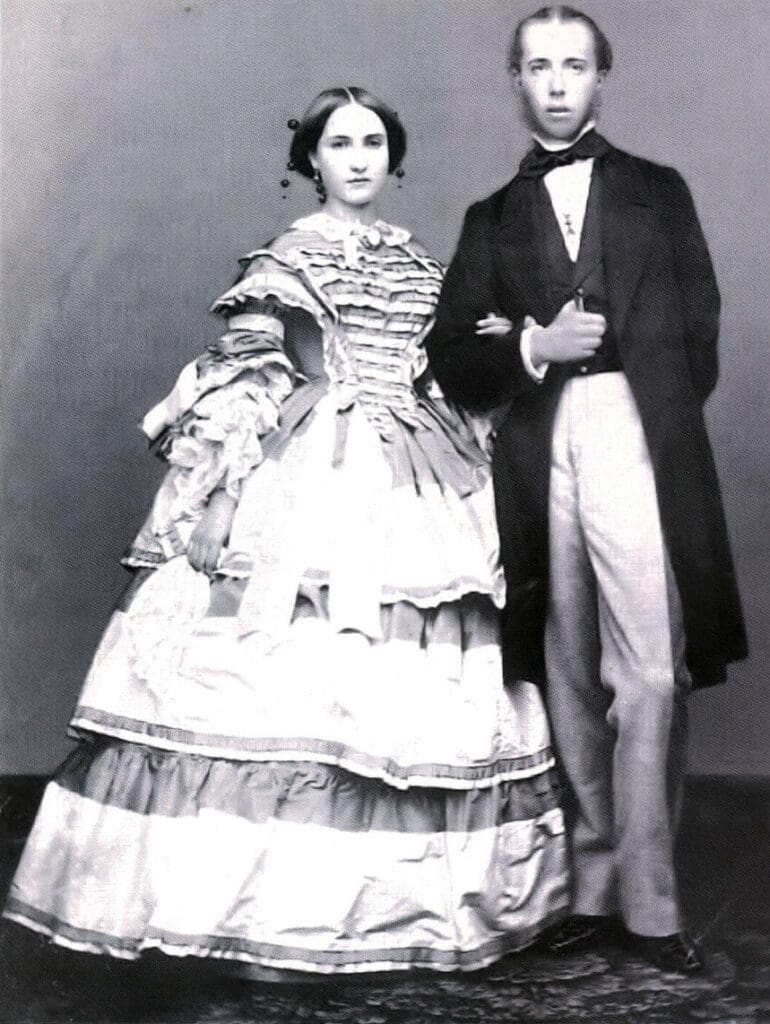
Reformer Viceroy
The ambition of Maximilian was not satisfied by his military career, so Francis Joseph appointed his liberal and reform-minded brother the viceroy of Lombardy-Venetia in 1857. In this capacity
he worked tirelessly to ameliorate the conditions of his subjects, and to win them over.
He reformed the tax code and ensured that revenues are distributed more evenly. He furthermore developed the health system of the province, ordered the draining of swamps and the modernization of the infrastructure. Maximilian also initiated many construction projects, especially in Milan, for example the restoration of the Bibliotheca Ambrosiana, or widening the Piazza del Duomo. Despite all these efforts, the Italians still resented the Habsburg rule, with many smaller rebellions breaking out. The emperor blamed his brother for the instability, accusing him of being too liberal and permissive toward the rebellious population, and eventually removed him from his position in 1859.
So the young archduke ended up without a realm. However, soon something unexpected happened that changed both his life and Mexico’s history.
Ascending to the Throne of Mexico
Mexican conservatives approached Maximilian as early as in 1859 with the proposal of making him ruler of their country. He seemed like an ideal candidate: he was unlikely to ever rule Austria, was proven to be a competent administrator of Lombardy, and furthermore, was a royalty from a European nation that was neutral in the conflict between Mexico and the intervening powers.
This scheme could finally materialize in 1863, when the French Empire and its Mexican conservative allies gained a foothold in Mexico, after Napoleon III invaded the country in 1861. To lend legitimacy to his enterprise, the French emperor allowed his Mexican allies to invite Maximilian to the throne.
Maximilian arrived at Mexico in 1864 and was subsequently crowned emperor. Despite his title and the name of the new state, Mexican Empire, Maximilian was not in charge of the whole country. Republican rebels, led by Benito Juárez still ruled many regions, especially in the northern areas, along the border with the United States.
Maximilian as Emperor
As emperor, Maximilian continued his programme of reforms just where he had left off in Lombardy. He affirmed many of Juarez’s reform laws, including freedom of religion, and the secularization of the church landholdings.
Maximilian was supported by a small, but influential group of Mexican scientists and scholars, referred to by historians as ‘los imperialistas’. Influenced by Positivist ideas, these progressive minds sought to use the monarchical framework to implement reforms. Their vision was of a centralized liberal autocracy; therefore, these intellectuals strived to reform the administration, the municipality structure, and the legal code of the country. The ‘imperialists’ also supported Maximilian in his quest to expand education and uplift the Indians. This group was in fact
quite similar to the Hungarian ‘Centralists’ of the Hungarian Reform Era, led by József Eötvös.
With their help, Maximilian initiated an ultimately unsuccessful reform programme, much akin to the one he had started in Lombardy. He issued many resolutions, regarding a wide range of topics ranging from education to building canals. The borders of Mexico were charted and officially determined for the first time in its history, while its public administration was reorganized. Mexico was divided into nine provinces, which were under the control of governors, appointed by the emperor, creating a centralized system. The executive branch was made the strongest, allocating mere consultative power to the legislature. However, Maximilian enshrined equality before the law, free speech, and even issued decrees expanding labour rights, with special concern for Indian workers. He tried to restructure the education along the lines of the German three-trier system. The emperor launched an imperial railway company with the aim of boosting infrastructure, restructured the country’s banking system, and supported immigration to Mexico. Maximilian also supported excavations of Aztec ruins, and personally commemorated the day of Mexican independence, trying to tie his empire to both Mexico’s independence ethos and to the legacy of the ancient indigenous empires.
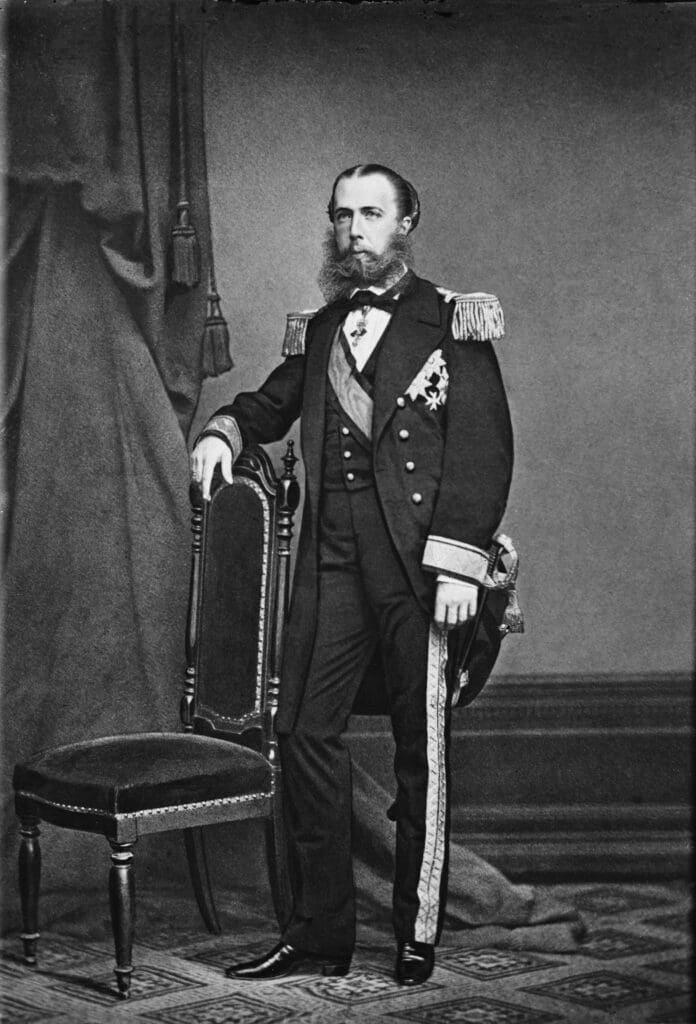
Maximilian sought to preserve the ejidos, the communal landholdings of Mexican Indian villages. He also initiated the building of schools in Indian areas and encouraged parents to send their children there. He received envoys from these communities regularly and listened carefully to the woes of the Indigenous population. All in all,
Maximilian sought to create a liberal autocracy, ‘everything for the people, but nothing by the people’,
as the motto of his enlightened absolutist Habsburgs ancestors went. However, the well-meaning reforms seldom reached the more remote areas, and obviously, did not impact the territories held by the rebels.
Maximilian had a reconciliatory attitude toward the liberals as well, and eventually won over some prominent liberal politicians. However, at the same time, he estranged many conservatives who eventually realized that the emperor himself was, in fact, a liberal. Keeping the anti-clerical laws in place was especially abhorrent for the Catholic Church. At the same time, the intelligent, but narrow imperialist circle did not provide mass support, or even political leverage for the emperor. He soon found himself without a base. The liberals saw him as a foreign invader and a stooge of the conservatives, while the conservatives became disappointed in him due to his liberal reforms and secular attitude.
The empire’s situation also deteriorated on the battlefield. While France had a relatively firm grip over urban centres, in rural areas, the pro-republic partisan warfare was successful. This hampered the stability of the Mexican Empire and the French occupation. The situation only worsened after the United States prevailed over the Confederacy in 1865, and established contact with the Mexican republicans. President Grant permitted private loans and arm sales to them, which, of course, put the empire in an even more difficult position. Washington saw the French incursion as a violation of the Monroe Doctrine and upped its support of Juárez.
While Washington was no longer bogged down by domestic issues, Paris was burdened by the deteriorating French–Prussian relations, which averted Napoleon III ’s attention from Latin America.
The Brutal End
Wary of a possible US military intervention, fearful of the Prussians, and disappointed by the military defeats, the French pulled their troops from Mexico in early 1867. This sealed the fate of the empire, and thus that of Maximilian. The Mexican Empire suffered a total military defeat in 1867.
Maximilian was captured during the summer, court martialled, and executed on 19 June.
Many European monarchs, but also liberal intellectuals, like Victor Hugo, tried to intervene on his behalf, but Juárez was adamant, wishing to send a warning to European powers against any intervention. Maximilian’s body was handed over to Austria, and a steamship carried it home. The emperor was buried in the Habsburg Imperial Crypt in Vienna, close to his brother, Francis Joseph.
Maximilian’s legacy is a mostly ignored topic in contemporary Mexico. While he is not demonized, the emperor has no place in the republican pantheon of the country. After the empire’s fall, Mexico was ruled for decades by General Porfirio Díaz, a liberal soldier, who gained fame fighting the empire and the French. Maximilian’s memory was suppressed and swiftly got forgotten. Some right-wing groups still commemorate him, seeing the empire as a bulwark against US domination. Some historians also consider the emperor a great liberal reformer, who tried to uplift Mexico. What is generally agreed is that he was a tragic figure, and a hopeless romantic. But his grave is always decorated with Mexican flags, and pesos are left there by Mexican visitors, which shows that the memory of the Mexican Empire is still alive.

